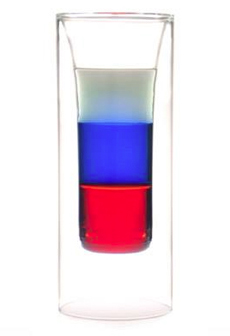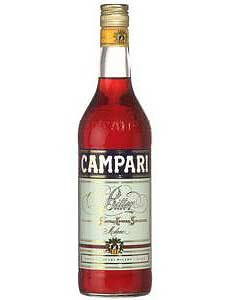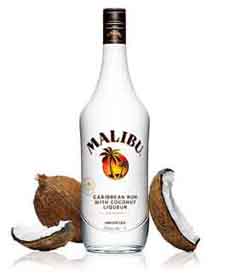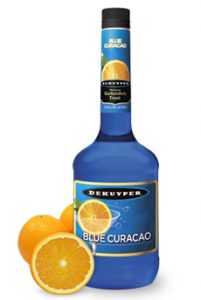JULY 4th: Pousse-Café, A Layered Drink
|
|
For July 4th food fun, how about a red, white and blue pousse-café (pronounced POOSE-caff-FAY)—a layered or stacked drink. It’s an after-dinner drink composed of layers of different colored liqueurs or other spirits, that sit on top of each other in discrete layers. The trick is to pour them in order of the densest to lightest. The name means “pushes coffee” in French. In other words, pousse-café is a liqueur or liqueur-and-spirit drink served with after-dinner coffee (although since the dawn of shooters, it can be served anytime a shot is called for). Originally, pousse-café was served in a small, stemmed glass or liqueur glass. The drink was created to please the eye, rather than to present a cocktail of particular flavors. These days, many bartenders don’t like to make them. It’s much more work than a conventional cocktail. Modern layered cocktails are often two layers, including, among others: A French invention, pousse-café came to the U.S. as an example of fashionable drinking. Layers can be as few as two; some mixologists have created many more. We’ve found references to seven layers! Because of the spirit density issue, it can be hard to achieve one’s desired flavors. For example, you may want to create a cocktail of, say, chocolate liqueur, raspberry liqueur and vodka. But their specific densities may not layer properly (disclosure: we don’t know—we haven’t tried layering this particular combination). Liqueurs with the most sugar and the least alcohol are the densest, and go on the bottom. Those with the highest alcohol content go on top. The more layers, naturally, the harder it is to match the flavors in perfect harmony. Thus, the layers should be drunk individually. The drink was originally served with a small silver straw (very French!). The term pousse-café was popularized in 1880s France, when the drink became very fashionable. However, layered drinks were made before then, when some clever mixologist—or possibly a chemist—discovered that layers could be made based on the specific gravity of a liquid. The 1862 edition of the seminal cocktail reference book, How to Mix Drinks by Jerry Thomas, lists three poussé recipes under the heading “Fancy Drinks.” One was Pousse l’Amour, a layering of maraschino liqueur, an egg yolk (then popular in drinks), vanilla liqueur and brandy [source]. TRIVIA: On March 18, 1966 a Broadway play opened, called Pousse Cafe. A flop, it played only two performances. The score was written by Duke Ellington. You can hear it here. Ingredients Per Three-Ounce Drink |
|
|
Preparation These ingredients are for a three-ounce drink. For a shot glass or a liqueur glass, try 1.5 teaspoons. Shot glasses and liqueur glasses vary in height, so test your glass with 1.5 teaspoons of each spirit. Use water to measure 4.5 teaspoons into the glass. Adjust the amount as needed; then divide the total amount into three, and measure the spirits accordingly. 1. USE the back of a bar spoon to carefully and slowly pour the layers: first the Blue Curaçao, then the Malibu Coconut Rum, and then Campari. 2. TO SUBSTITUTE ingredients, try them first to see how they layer. If you want to use grenadine, pour it first; then the rum, then the Curaçao.
|
||






